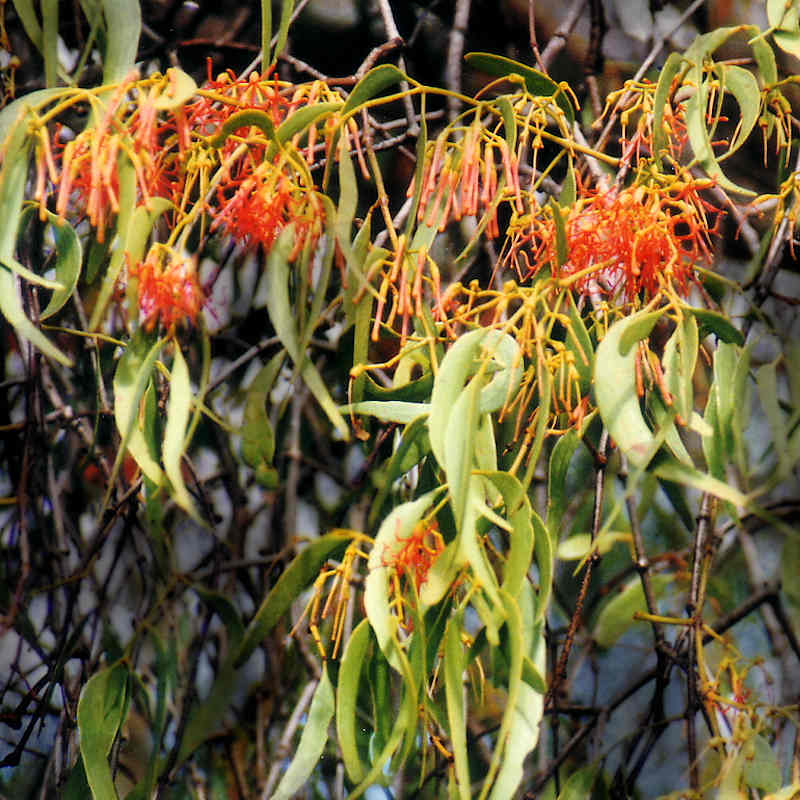Ho Ho Ho and Merry Christmas. I do hope you get the chance to hang some Mistletoe this Christmas. The romantic idea of kissing underneath it dates to centuries old folklore.
In Australia we have around 90 different native species of mistletoe, more species than anywhere else in the world, unlike Europe which has only one. Our Australian species belong to 2 different families, the Viscaceae, which has only a small number of species, and the Loranthacae which has many more.
Noosa’s Native Plants Guide notes that mistletoe can be found in Wallum Woodlands and Dry Eucalypt Forests.
While they are a parasitic plant they do not necessarily kill trees but rely on the host tree for water and support. The Mistletoe can be an issue for Macadamia plantations however, affecting tree health and yield in many places including the Gympie region.
Mistletoe is an important part of our ecosystem providing a food source for animals, birds and insects. It also provides shade and nesting habitat for birds. Their nutrient rich leaves, when dropped, enrich the soil.
Mistletoe is also the host plant for Black Jezebel butterflies as well as others. You could try looking for their caterpillars or chrysalis on the mistletoe foliage.
Mistletoes rely on the Mistletoe bird to disperse the seeds. The bird eats the berries of the Mistletoe plant which it digests in thirty minutes. Rubbing its bottom on a host branch, the bird deposits a sticky mess from which the mistletoe will eventually grow.
Mistletoes were a source of food for Aboriginal people because of their sweet sticky fruits. Particular species were also used to treat the common cold.
It often produces flowers and fruit when little else is available, another good reason to welcome any mistletoe you see growing in your garden.
Kay Southam
Photos by Stephanie Haslam








